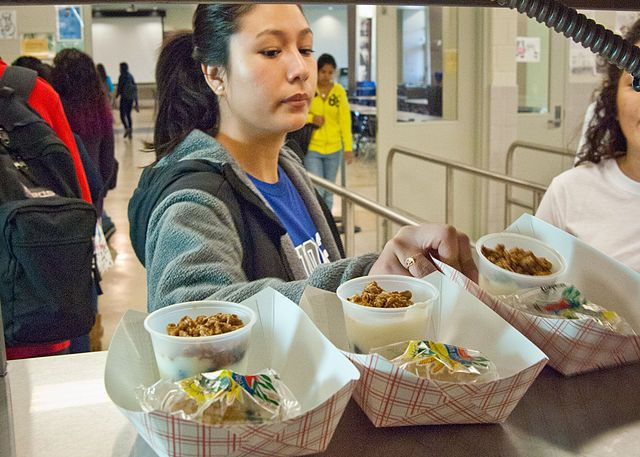Poor Kids Make Better School Lunch Decision Than Their Wealthier Peers; Middle Class Children Choose Pizza And Pudding

New research conducted within the British school system found that children entitled to Free School Meals — the equivalent of the National School Lunch Program in the U.S. — were more likely to pick nutritionally valuable, freshly prepared dishes than children who were not part of the government-subsidized lunch program.
"Healthy eating habits are crucial to reducing children's risk of health problems, both long- and short-term,” Dr. Hannah Ensaff, of the University of Sheffield, stated in a press release. “Eating behavior is learned early on, and food preferences established in childhood and adolescence tend to persist into adult life, with related consequences for long-term health.”
Tween And Teen Food Choices
Of the eight-million-plus school children in England, more than three million eat a school meal every day. To examine students’ food choices in relation to schools' food standards and free school meals (FSM), a team of researchers analyzed students’ food choices in two large secondary schools, referred to as Schools A and B, in Yorkshire, England. The number of students involved in the study totaled 2,660, and they were all between the ages of 11 and 18 years old.
Despite the availability of more nutritious options, the most popular food items were sandwiches and pizza, with those items chosen by 40.4 percent and 31.2 percent, respectively, of students in School A; and 48.3 percent and 27.3 percent, respectively, of students in School B. Meanwhile, the more nutritious "dishes of the day" accounted for only 8.7 percent and 8.3 percent of food choices at School A and School B, respectively.
Comparatively speaking, the poorer, FSM students were more likely to make better food choices than their peers. In School A, FSM students chose a main dish, which represents better nutritional value, 87 percent of the time compared to 70.3 percent of the time by non-FSM. In School B, FSM made the nutritionally-correct choice 75.4 percent of the time as compared to non-FSM 56.1 percent.
“The patterns of food choice of students receiving free school meals with those that pay for them are of particular interest,” Margo Barker, Ph.D., senior lecturer in nutritional epidemiology, said in the press release. “Students receiving free school meals made nutritionally superior choices in the school canteen, although surveys show that their overall diet is lacking.” At-home eating behaviors, then, may not be optimal, which suggests a path for future study. Another question that might be addressed in future research: Do the results of this study hold true around the world?
Beyond England
In the U.S., the National School Lunch Program is a federally-assisted meal program operating in over 100,000 public and non‐profit private schools, and residential child care institutions. During 2012, the program provided nutritionally balanced, low‐cost or free lunches to more than 31 million children every school day. The program offers partially subsidized meals to qualified lower-income children as well. Schools are also eligible to receive USDA foods, referred to as “entitlement” foods, at a lower cost depending on the number of meals served in Fiscal Year 2012‐2013. Additionally, Team Nutrition USDA provides schools with technical training and assistance to help staff prepare healthful meals for the children.
“The school food environment is an obvious public health intervention, particularly as children today seem to rely more on school food than decades ago,” Dr. Ensaff said in the press release. That being the case, why are non-nutritious foods even available at schools?
Source: Ensaff H, Russell J, Barker ME. Meeting school food standards — students’ food choice and free school meals. Public Health Nutrition. 2013.



























